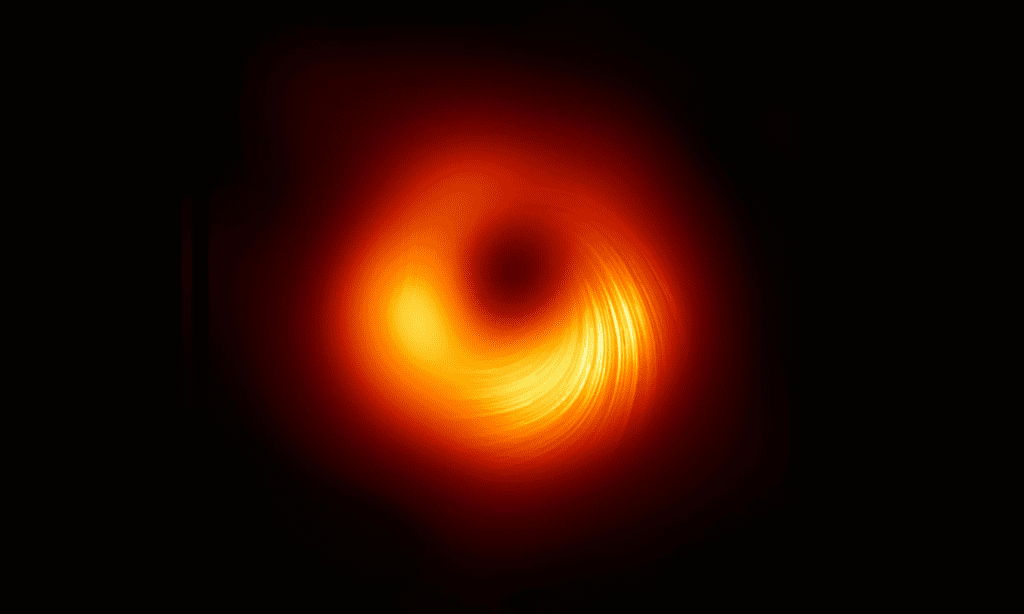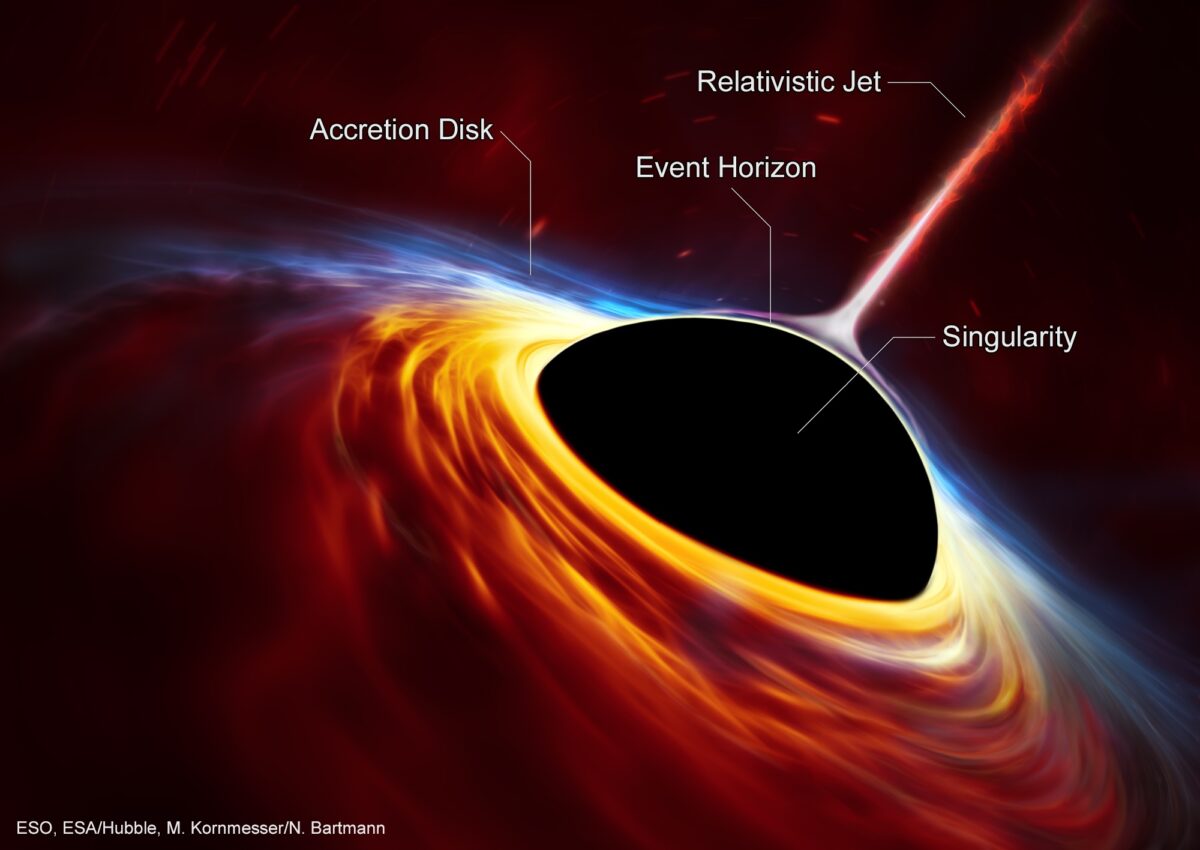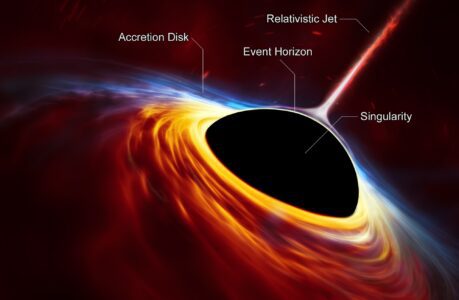Unlocking the Secrets of Event Horizons in Astronomy and Black Holes
Event Horizon: these two words evoke a sense of mystery and wonder, reminiscent of science fiction novels and blockbuster movies. But in the realm of astrophysics and astronomy, the event horizon is a crucial concept, an invisible boundary that surrounds black holes, those enigmatic cosmic entities that captivate the imagination of scientists and laypeople alike. In this extensive and academic exploration, we will delve deep into the concept of the event horizon, its significance in understanding the universe, and the mysteries it still holds. This article aims to provide a comprehensive understanding of what an event horizon is, how it functions, and its implications in our quest to unravel the cosmos.
Defining the Event Horizon
What is an Event Horizon?
At its core, an event horizon is a theoretical boundary that encircles a black hole, a region from which nothing, not even light, can escape due to the immense gravitational pull exerted by the black hole. To grasp the concept more profoundly, let’s break it down into its key components.
1. Black Holes: Cosmic Devourers
Black holes are regions in space where gravity is so intense that not even electromagnetic radiation, including light, can escape their gravitational grasp. They are formed from the remnants of massive stars that have undergone gravitational collapse. The core of the star collapses in on itself, resulting in a singularity – an infinitely dense point – at the center. This singularity is surrounded by the event horizon, the boundary beyond which nothing can escape.
2. Gravity’s Unrelenting Pull
The key factor that defines the event horizon is gravity. In the vicinity of a black hole, the gravitational force becomes exceedingly strong. The event horizon represents the point at which the gravitational pull becomes so overpowering that escape becomes impossible. Anything that ventures beyond this boundary is destined to be pulled inexorably toward the black hole’s singularity.
3. Light’s Ultimate Captor
One of the most fascinating aspects of the event horizon is its impact on light. As photons of light travel through space, they follow curved paths in the presence of a massive gravitational field, as predicted by Einstein’s theory of general relativity. When photons approach the event horizon, their paths become so severely curved that they eventually loop back and re-enter the black hole. This phenomenon ensures that no light can escape from within the event horizon, rendering the interior of the black hole invisible to external observers.
Event Horizon: The Point of No Return
Now that we have a basic understanding of what an event horizon is, it’s crucial to emphasize that the event horizon marks the “point of no return.” Once an object crosses this boundary, there is no escaping the gravitational clutches of the black hole. Even powerful rocket engines or the fastest spaceships known to humanity would be utterly powerless in the face of the black hole’s gravitational pull.
Unveiling the Mechanics of Event Horizons
Anatomy of an Event Horizon
Understanding the structure of an event horizon is fundamental to comprehending its function. The event horizon consists of several key regions, each with its unique characteristics.
1. Inner Event Horizon
The inner event horizon, often referred to as the Cauchy horizon, is the closest boundary to the singularity within a black hole. Objects and matter that cross this boundary are inevitably drawn toward the singularity, where the gravitational forces become infinitely strong.
2. Outer Event Horizon
Beyond the inner event horizon lies the outer event horizon, which is the more well-known boundary. This is the point at which light and matter begin their irreversible descent into the black hole. Observers outside the black hole can witness objects and matter approaching the outer event horizon, but they can never see what happens beyond it.
3. Photon Sphere
Between the two event horizons, there exists a region known as the photon sphere. In this region, photons can orbit the black hole in a stable, circular path. This phenomenon creates the visually stunning effect of a bright ring of light encircling the black hole, often referred to as the “photon ring.”

Event Horizon Dynamics
The dynamics of an event horizon are governed by the laws of general relativity. Albert Einstein’s groundbreaking theory introduced the concept of spacetime curvature, where massive objects, such as black holes, warp the fabric of spacetime itself. This curvature dictates the behavior of matter and light near a black hole.
1. Time Dilation
One of the most intriguing consequences of the event horizon is time dilation. As an object approaches the event horizon from an observer’s perspective, time appears to slow down for the approaching object. This means that if you were to observe an object crossing the event horizon, it would seem to take an infinitely long time to do so. This effect arises from the extreme curvature of spacetime near the black hole.
2. Gravitational Redshift
Another consequence of the event horizon is gravitational redshift. As light attempts to escape the intense gravitational field near the event horizon, its wavelength is stretched, causing it to shift toward the red end of the electromagnetic spectrum. This phenomenon is a direct result of the energy required for light to overcome the gravitational pull of the black hole.
Event Horizons in the Real Universe
Studying Event Horizons
While the concept of the event horizon is firmly rooted in theoretical physics, it also has practical applications in astronomy. Scientists have made significant strides in detecting and studying event horizons, particularly in the context of black holes in our universe.
1. Event Horizon Telescope (EHT)
One of the most remarkable achievements in the field of astronomy is the creation of the Event Horizon Telescope (EHT). The EHT is a global network of radio telescopes that work in unison to observe distant black holes and their event horizons. By combining data from these telescopes, scientists can create high-resolution images of the immediate vicinity of black holes, including their event horizons.
2. First Image of a Black Hole
In 2019, the EHT collaboration achieved a historic milestone by capturing the first-ever image of a black hole’s event horizon. The image, which depicted the supermassive black hole at the center of the galaxy M87, provided a visual confirmation of the existence of event horizons and the predictions of general relativity.
Implications for Understanding the Universe
The study of event horizons and black holes holds immense importance in our quest to understand the universe. Here are a few key implications:
1. Testing General Relativity
Event horizons provide a natural laboratory for testing the predictions of Albert Einstein’s general theory of relativity. The extreme conditions near black holes allow scientists to verify the accuracy of the theory in the most challenging gravitational environments.
2. Unveiling the Nature of Black Holes
Studying event horizons allows scientists to gain insights into the properties of black holes, such as their mass, spin, and accretion processes. This, in turn, helps us understand the role of black holes in galaxy formation and evolution.
3. Illuminating the Dark Side of the Universe
Black holes and their event horizons have a significant influence on the cosmos. They play a role in the distribution of matter and energy, shaping the structure of galaxies and even influencing the expansion of the universe itself.
Event Horizons: Cosmic Mysteries and Future Research
Beyond the Event Horizon
While we have made significant strides in understanding event horizons and black holes, many questions remain unanswered. Some of the most pressing mysteries include:
1. Information Paradox
One of the most perplexing issues in black hole physics is the information paradox. When objects fall into a black hole, it is believed that all information about them is lost forever. This apparent violation of quantum mechanics has puzzled scientists for decades and remains an active area of research.
2. Nature of Singularities
The nature of singularities within black holes is still shrouded in mystery. General relativity predicts that these singularities are infinitely dense points, but the theory breaks down under such extreme conditions. Understanding the true nature of singularities is a critical goal in black hole research.
3. Quantum Gravity
The reconciliation of general relativity and quantum mechanics, known as the quest for a theory of quantum gravity, remains an ongoing challenge. A complete theory that unifies these two pillars of modern physics is essential for a comprehensive understanding of black holes and their event horizons.
Event Horizons in Black Holes
In this extensive exploration, we have delved into the intricacies of event horizons, the mysterious boundaries that encircle black holes and shape our understanding of the universe. From their theoretical underpinnings to their real-world observations, event horizons continue to be a source of fascination and discovery for scientists and astrophysicists worldwide. As we venture further into the cosmos and push the boundaries of our knowledge, event horizons will undoubtedly remain at the forefront of our quest to unlock the secrets of the cosmos.
Please note that this article serves as an academic overview and does not provide a definitive conclusion, as the mysteries surrounding event horizons continue to inspire further research and exploration.

